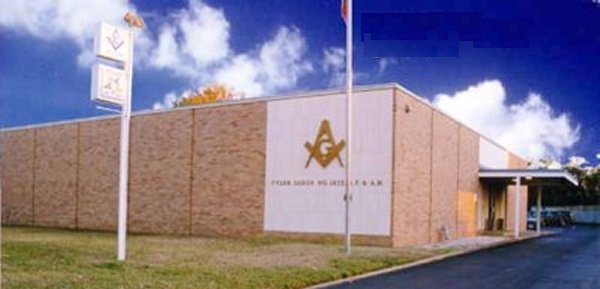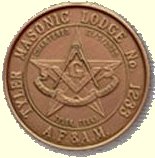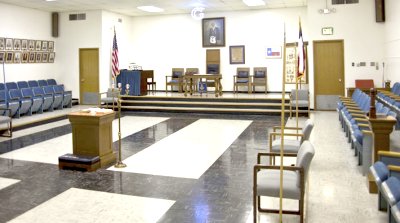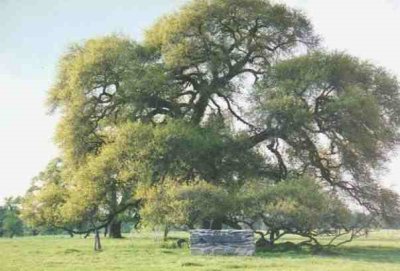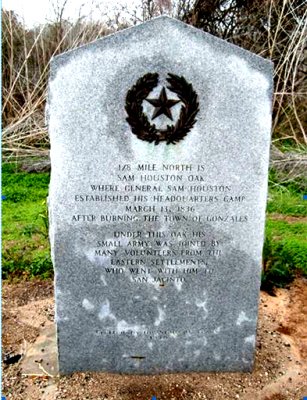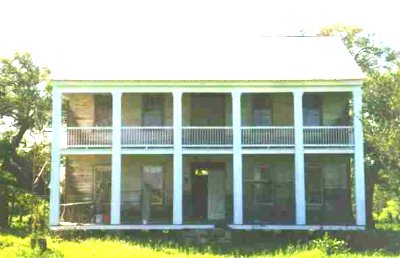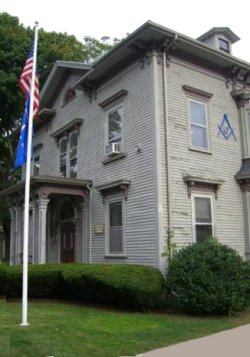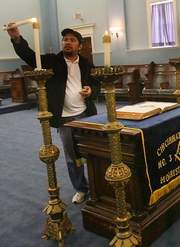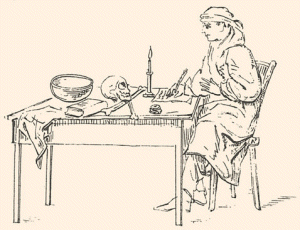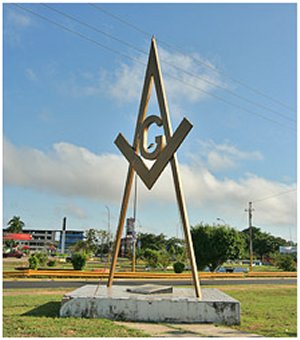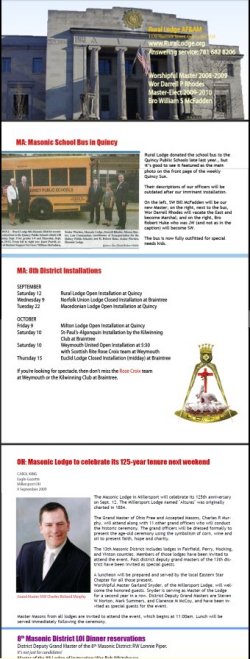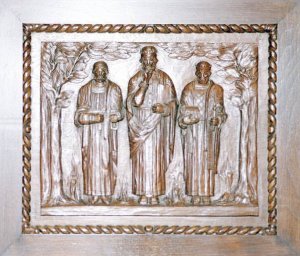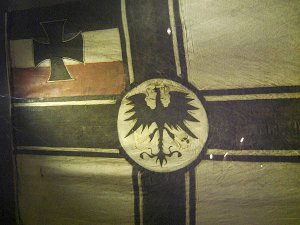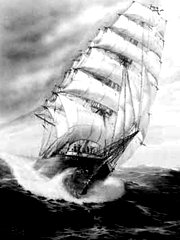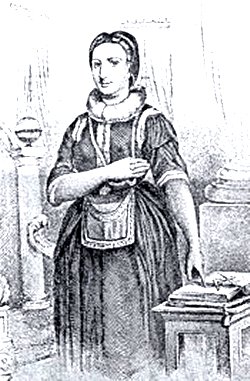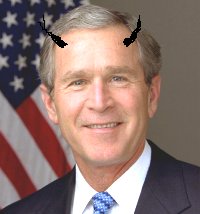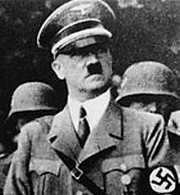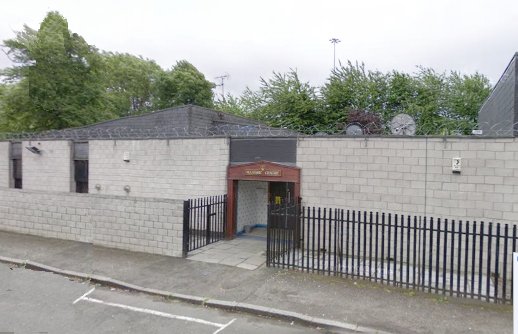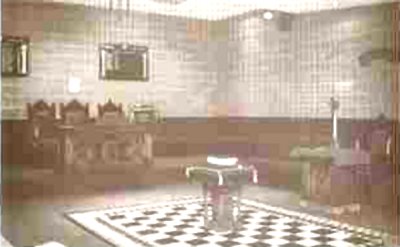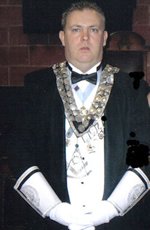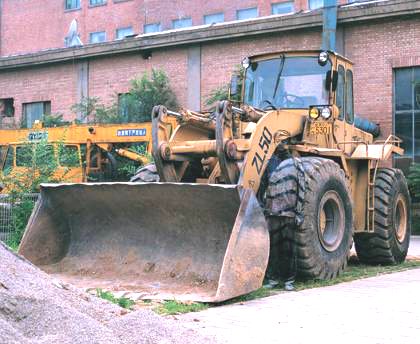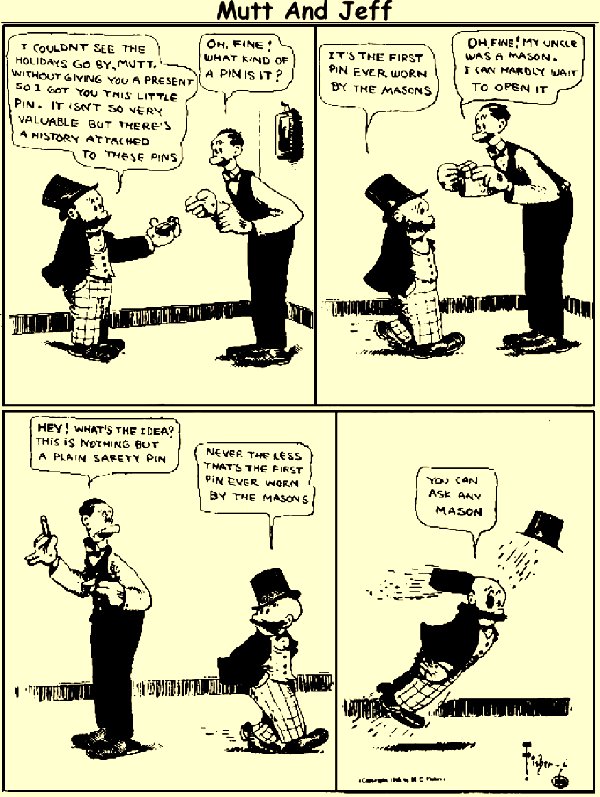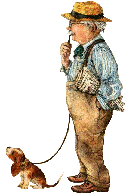
|
January 2010

Tyler Lodge No. 1233, A.F. & A.M.
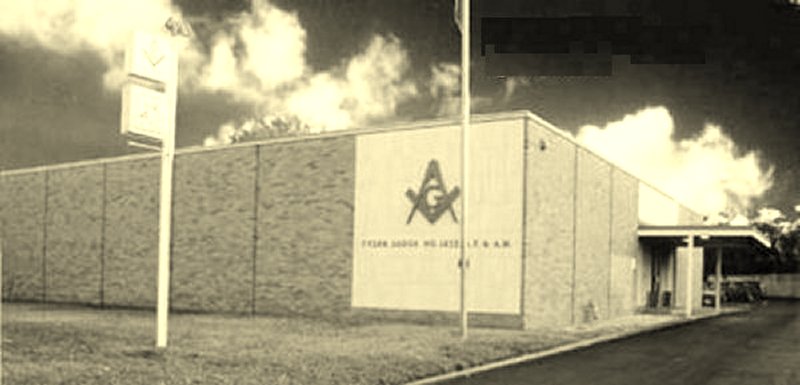 Tyler Lodge No. 1233, A.F. & A.M. in XXX County, Texas |
|
Page II | |||||||||
|
This Small Town Texas Mason's E-Magazine is not affiliated with any state Grand Lodge or individual Blue Lodge. It was created to enlighten, educate and entertain Masons and non-Masons alike. As title suggests, each issue will feature a small town Texas Masonic Lodge and some Texas Masonic history or hero in each issue The beliefs, ideas and opinions expressed here are strictly those of the authors and not necessarily those of the editor, any individual Blue Lodge or any state Grand Lodge.
A very sincere effort was made to avoid using any copyrighted material, without permission or giving credit to the author, in the creation of this web site. If you discover something that is yours, without giving you due credit, please let me know and due credit will be given or the item will be replaced.
Any material in this site may be used to increase the understanding of Freemasonry.
Story tools: |
Tyler Lodge No. 1233, A.F. & A.M
This Issue's Visit In Texas Masonic History - The Sam Houston Oak
The Secret Society Series - The First of Six
The Back Page - The Legacy Bequeathed by Freemasonry
Freemasons Defy Mystical Roots
Masons Host Navy Recruits For Christmas
The Relevancy of Freemasonry Today
Modern Freemasonry: View From Latin America
The Really Great Masonic Educational Web Sites Series.
Intrigue, But No Skeletons At Masonic Hall
Why We're Fascinated by the Paranormal, Masonic Myths and Secret Societies
The Real "Secrets" Of Freemasonry
| ||||||||
|
Page IV | |
|
Continued From Page III
Through the provisions of a special dispensation granted by Deputy Grand Master Claud L. Austin, a called meeting was opened in the lodge room of St. John's Lodge on July 28, 1943, for the purpose of a joint installation of officers of St. John's Lodge No. 53 and Tyler Lodge No. 1233. Right Worshipful Galloway Calhoun, Past Grand Master, introduced Hon. J. Dixie Smith, Past Grand Orator, as the installing officer and Right Worshipful C.B. Hart, District Deputy Grand Master, as installing marshal. Brother J. Dixie Smith then installed his son, Frank Dixie Smith, as Worshipful Master of Tyler Lodge No. 1233. The war years had a beneficial impact on membership but also on Lodge attendance. For example, in late October 1943, by special dispensation of the Grand Master, a joint meeting was held by St. John's Lodge No. 53 and Tyler Lodge No. 1233 in the gymnasium of Tyler High School. Tyler Lodge opened the Master Masons Lodge and then called it from labor to refreshment. The Tyler High School Band, under the direction of Brother J. F. "Doc" Witte, musical director for both the high school and Tyler Lodge, presented a special musical program. When lodge was called back to labor, the chairs were turned over to St. John's Lodge and Right Worshipful Galloway Calhoun was appointed master of ceremonies. A Master's Degree was conferred by a team from Waco, Texas. Before an audience of approximately 1,500 Masons including General Hartle of Camp Franklin, former Texas Governor Pat M. Neff, who was later to serve as Grand Master in 1945, and Texas Supreme Court Chief Justice James P. Alexander. Many other prominent Texas Masons attended the large gathering. Tyler High School served as the meeting place for another large Masonic communication on March 27, 1944, the 108th anniversary of the death of Texas Independence leader Colonel William Fannin, in whose honor Camp Fannin was named. The Master's Degree was conferred on Charles M. Brammel, the commanding officer at Camp Fannin, by a distinguished group from Hella Shrine Temple and the Dallas Scottish Rite Bodies. There were 1,618 Master Masons representing 176 lodges from 33 Grand Jurisdictions present. After World War II ended, Tyler Lodge membership continued to increase until it reached 764 in 1960. In 1952 Lodge members voted to increase dues from the long-standing $6.00 per year to $9.00. In that same year Brother J. Guy Smith was installed as Worshipful Master of Tyler Lodge. Later, in 1955, he served as District Deputy Grand Master under Grand Master George Moffett. Brother Smith was elected to the Grand Lodge Committee on Work (1958-1965) and was elected to the office of Grand Junior Warden for 1966 and advanced to become Grand Master of Texas Masons in 1969. While Brother Smith was Grand Master, Astronaut Edwin E. Aldrin, Jr., a member of Clear Lake Lodge No. 1417 of Seabrook, Texas, set foot on the moon with a letter from Grand Master Smith deputizing him to claim the moon as a part of the masonic territorial jurisdiction of the Grand Lodge of Texas. A painting of Grand Master J. Guy Smith that formerly hung in the entrance of the Grand Lodge in Waco while he was Grand Master, is on display in the East behind the chair of Tyler Lodge's Worshipful Master. With hundreds of Lodge members and a need for more space, Worshipful Master Harry C. Oliver in 1957 appointed a committee to investigate ways to finance a new lodge building. In August 1960 a contract was approved to employ brothers Charles R. Russell, John L. Decker, and Vernon W. Cross, Jr., as architects for the new lodge building. Also, a building site was purchased for $9,950.00, with a down payment of $4,550.00. The note for the balance was retired within two years. In March 1961, Grand Master W.G. Proctor gave approval to create trust agreements to raise funds for constructing the new facility through cash donations and sale of debenture bonds to members. On August 31, 1962, a contract was let with Elmer Sharp for construction, but the contractor could not start because the lodge did not have sufficient financing in hand. In September 1962, Grand Master Robert L. Dillard gave approval to borrow $16,500.00 from Cooperative Savings and Loan Association and ground was broken by Worshipful Master Early F. Smith, Charter Worshipful Master Oscar Burton, and District Deputy Grand Master Ben Johnson. Grand Master Jim Weatherby issued a dispensation for the lodge to move from their old building on North Broadway to the new facility. The first meeting was held in the new lodge room on February 26, 1963, with 96 Masons signing the register. The Building was dedicated by Grand Master Weatherby on March 13, 1963. Grand Master J. Guy Smith gave the lodge approval to cancel the trust agreement and on June 24, 1970, all bonds were redeemed. On September 10, 1970, Grand Master Hal Burnett advised that all bonds had been redeemed and were back in the hands of the lodge. He congratulated the lodge for its progress in paying off its debt. On January 6, 1976, Tyler Lodge celebrated its fiftieth anniversary. It was an open meeting with 63 members and visitors present. Past Master Robert J. Brown read a brief history of the lodge that had been prepared by Past Master Clayton E. Dean. Although there were no charter members present, there were four fifty year members present and recognized. Additionally, sixteen Past Masters were introduced, eight of whom were Past District Deputy Grand Masters. Worshipful Master Pete Martinez introduced Right Worshipful J. Guy Smith, Past Grand Master, who made a few remarks and then introduced Brother James H. Stewart, who was a former Superintendent of the Masonic Home and School at Fort Worth. At the time, Brother Stewart was president of Texas Eastern University in Tyler (he has since returned to the superintendency of the Home and School). Brother Stewart spoke on "Our Responsibility As Masons For The Present And For The Future." Refreshments were served by Worthy Matron Ethel McChristy and five other ladies of Rose Garden Chapter No. 975, Order of the Eastern Star (this Chapter was instituted in 1950 with a charter membership of thirty-two). Fourteen years after completion of the lodge facility, Past Master S.D. "Dick" Gulledge, in October 1977, introduced a motion to start a new building fund to construct a dining room for the Lodge. To start the program on a positive note, Gulledge presented a check for $150.00. Past Master James C. Cheatham seconded the motion and contributed a like sum. The motion passed and other donations that evening brought the total to $850.00. The ladies of the Rose Garden Chapter O. E. S., strong advocates of the construction proposal, earmarked $2,000. A building committee was appointed and on December 13, 1977, they reported the dining room addition would be approximately 1,500 square feet and cost about $30,000. Interest in the dining room waned when Lodge members realized its completion would increase Lodge property taxes by one-third; and increase insurance, heating, and cooling costs. The project was dormant from late 1977, after the Brethren realized the additional costs associated with the project until early May 1980 when a new member asked his fellow Lodge Brothers, "If I donate the foundation, slab and the roof, can the lodge finish the project?" Realizing the query was sincere, the Lodge's building committee, finance committee, officers, and several interested past masters met with the Brother and discussed the project. His proposal was brought before the lodge and was accepted. A committee was appointed to organize a fund drive with Brother William E. "Yankee" Greenlee as chairman. Letters were sent to the membership and money began to be contributed. The lodge voted to borrow from its savings account if it was necessary and the project was completed with the lodge owing only itself. Grand Master Sam E. Hilburn dedicated the addition on November 15, 1980, with 54 members and guests in attendance. During the meeting the Brother whose contribution made the project possible was called before the altar and Worshipful Master Mark L. Boon presented a life membership to Brother Wesley Pascal Atkinson. A thunderous approval from the lodge reflected the Lodge members consent for the honor. The new dining room has proved to be a very popular and vital part of the lodge. In the late 1950s membership began a slow increase until it reached 764 in 1960. It then dropped for two years until the new lodge building was completed and total membership surpassed 800 in 1965. With completion of the dining room in 1980 membership started a rise and reached 900 by 1982. The returns of 1983 peg membership at 929. Oh Yes, in the opening statement there was mention of one "almost Grand Master." Brother Henry Marsh Bell was appointed to the office of Grand Senior Deacon for 1948. He evidently was not in attendance at Grand Lodge because Brother Walter Brashear was his proxy at installation on December 2, 1948. On July 11, 1949, Grand Senior Warden Gabriel Penn Allen died. At the election of Grand Lodge officers the following December, Grand Junior Warden W. J. Burris was elected to the office of Deputy Grand Master and Brother Henry Marsh Bell was elected to the office of Grand Senior Warden. He was installed the following day. The following year, on December 7, 1950, Brother Bell was elected and installed to the office of Deputy Grand Master and while serving in that office the Great Architect of the Universe called him to the Celestial Lodge above. He was honored with the December 6, 1956, chartering of Tyler's third lodge, Henry Marsh Bell Lodge No. 1371, A.F. & A.M.
In conclusion, Tyler Lodge, born out of Tyler's adversities during the post-World War I adjustments plaguing all the United States, struggled in its infancy only to face a bleak, frustrating experience during the terrible years of the Great Depression of the 1930s. As that decade ended membership began to increase but the war years of the 1940s were a great boon. Ending the World War II period with renewed vitality, the Lodge's membership has built a solid organization. And now, in 1984, Tyler Lodge No. 1233, A.F. & A.M., looks to the future with great anticipation that the next fifty-nine years will be as successful and productive.
Brother Pete Martinez
|
|
Page V | ||
Other members were starting to get anxious as well, offering up comments like "What will we do if he doesn't show?" and "Are we going to have to postpone the degree?" There was certainly a lot of confusion in the temple and everyone seemed to be waiting for someone to tell them what to do if the Master didn't darken the door of the lodge that evening.
The Lodge Secretary, a two-time Past Master, felt that it was time to bring some order to all of the chaos. "Alright fellas, here is the deal, the Master did not contact me today about missing tonight's meeting and I couldn't reach him at home a few minutes ago. Perhaps he is stuck in traffic or something. However, there is no reason we cannot start the degree. Brother Amos is our Senior Warden and I know he is prepared to open the lodge and confer an Entered Apprentice degree. I know we weren't all prepared for this and it may be a little rough-going at points, but we can do this degree."
Brother Ron, the exasperated Senior Deacon, was still not satisfied. "But who will do the lecture? The only person in this lodge who does the Entered Apprentice lecture is our missing Master! Amos, you haven't learned that yet! You can't do the part!"
The members of the lodge quietly offered their agreement and the Senior Warden admitted that he could not do the lecture. The Lodge Secretary admitted that they may not be able to do the degree. After further discussion, he recommended that the Tyler go inform the candidates in waiting that there would be no degree. But just as he got up to inform the candidates the Lodge's Junior Steward, Steven, spoke up.
"I can do the lecture," he said very softly, almost as if he was telling a secret.
"Are you sure? Have you practiced? Can we even let you?" Brother Ron quickly and rudely asked him.
The Lodge Secretary quickly calmed Ron down and calmly asked "You have learned this lecture on your own?" Steven quietly nodded. "Do you want to perform it this evening?" Again, Steven quietly answered in the affirmative. "Well, let's go for it then!" said the Secretary.
The Brethren seemed to quietly grumble about this decision, but went about conferring the degree anyway. When it came time for the degree, Steven stepped up and began to deliver the lecture. The look of suspicion most of the Brothers gave him at first dissolved as he delivered one of the most inspiring lectures that they had ever seen. After he had finished, the Brethren applauded.
Brother Ron approached Steven and apologized for his rash behavior before Lodge, "I should have never doubted you, I learned more from that lecture than from any other I have listened to. You did a great job!"
The Junior Deacon announced that there was an alarm at the outer door, it was the Master, who had apparently been rear-ended in traffic and had left his cellular phone at home. The Brethren were quick to tell him how well Steven had performed the lecture and how he had saved the degree night.
The Master replied, "Well that is what I have been talking about, we need several people to learn each lecture so that we don't have to depend on one person to put on a degree. It appears that Steven here is the only Brother who paid attention to my comments on the subject last month."
The Brethren all agreed and several volunteered to learn lectures. It appeared as though the Master was tending to his flock even in his absence. | ||
|
Page VI | ||||||||
The Sam Houston Oak Reprinted With Permission Of The Author, Mike Cox
The day before, Houston had dispatched from Gonzales three of his best scouts, Erastus "Deaf" Smith, Henry Karnes and Robert Handy, on a dangerous mission. They had orders to ride to Bexar to learn how Col. William B. Travis and the other defenders of the Alamo were doing. With Smith in charge, the scouts made it only 20 miles west of town before they rode up on Susannah Dickinson, her infant daughter Angelina and Joe, Travis' slave. Dickinson passed on the grim news that her husband and all the others had died early on the morning of March 6, their mission fortress overwhelmed by soldiers under Gen. Antonio Lopez de Santa Anna. Karnes raced back to Gonzales to report to Houston while Smith and Handy stayed behind to escort the survivors. The word Karnes carried threw Gonzales into a panic. Twenty-five of Houston's soldiers deserted, an enraged Houston ordering their arrest. Houston's next order, made shortly after Smith and the survivors arrived about 11 p.m., was to torch the town and retreat. Houston said that women and children should leave immediately, assuring the townspeople that his troops would serve as a rear guard to protect them from the advancing Mexican army. Led by Houston, 374 citizen-soldiers marched eastward all night, crossing Peach Creek at Bartholomew D. McClure's plantation. In the pre-dawn darkness, the general called a stop for breakfast and rest. To the west the Texans could still see the orange glow of the burning town. Soon they started new fires, and began boiling coffee and cooking breakfast.
Their bellies full, even the strong coffee did not prevent most of the men from sinking into an exhausted sleep. Meanwhile, stragglers continued to arrive from the burned town - men, women and children on foot, in oxcarts or on makeshift, horse-drawn sleds to more easily traverse the mud left by recent rains. "It was a sad thing to see the women and children plodding their way across the prairie," later wrote David Kokernot, one of the volunteer soldiers. "No tongue can express the sufferings those fleeing families were called upon to endure." A gray granite historical marker placed nearby in 1936 says the oak that was there when all this happened briefly served as the "headquarters" of Houston's army. While that is technically true, Houston did not linger. Two hours after arriving, the weary general, longer days ahead of him, commanded the soldiers to fall in and continue their eastward march. At least he had more men than he had arrived with. A volunteer company organized in San Felipe by Capt. John Bird had been camped at the creek and readily joined Houston's army. Now the general had an addition 90 men. The owner of the land along Peace Creek, McClure, had settled there in 1831 with his 19-year-old bride, Sarah. They lived in a cabin and made a living off the land and by providing food to travelers. The McClures fled with the rest of Gonzales County's residents, but returned after the revolution. When McClure died in 1841, Sarah kept the place. "A braver or grander-hearted woman never trod the soil of Texas," historian John Henry Brown later observed.
Sarah outlived her second husband, staying in the house until her own death in 1894. A century later, the old house still stood, but it was vacant and endangered. The old house is still owned by descendants of the Braches family. In 1995, the house was restored -- a gift to the Braches family and to posterity from an adjacent property owner.
Directions to the Sam Houston Oak from the Gonzales County Courthouse (414 St. Joseph St.) in Gonzales, go north on St. Louis St. for 2.0 miles. Turn right (east) onto US Alt. 90. and go 8.0 miles (cross Peach Creek), then left on CR 361 (a centennial marker is here). Go 0.3 mi. to the entrance for the McClure-Braches House on the left. The tree, also known as the "Sam Houston Oak," is on the right of the drive to the old house. - Please respect private property by viewing the tree from the road, or by calling the site manager in advance. |
|
Page VII | |
The 'Un-secret' Society Special to the Reporter From The Rural Masonic Lodge Newsletter
An anniversary flag now flies at 162 Pleasant Street to commemorate the upcoming anniversary: 25 March 2010. The flag will be flown throughout the anniversary year, and plans are already under way for a series of celebrations marking the event’s significance. Marblehead native Donald Doliber has been the historian for the Philanthropic Lodge for the last 10 years. In preparation for the upcoming anniversary, Doliber has been has been working full time researching the history of the lodge. His presentation at this week’s general meeting is a precursor to a larger talk he is planning at the 25 March anniversary celebration. “New members will review the degree work they have just completed,” Doliber said. “They will hear a portion of the history, but the formal presentation will come next March.” The public is invited to hear Doliber speak at 7:15pm this Thursday, and again once the official celebration gets under way. The Philanthropic is working closely with the Marblehead Historical Society to share the lodge with local residents. On 17 October at an open house, the public will have the opportunity to understand the traditions, the symbols and the larger meaning behind the lodge through the books and documents on display. An original charter signed by Paul Revere is one such artifact. By opening its doors to the public, Lodge Master Allan Martin hopes to demystify some of the perceived “secrets” held by Masonic lodges. “We are trying to get out more and make it less of a secret club,” said Martin. “Coca-Cola has perhaps their own recipes they do not wish to share. Our recipe is no secret.” Martin added that the Masonic mission has always been “to make better men by holding them to higher standards.” Martin emphasized the commitment the Philanthropic members have made to the community. “If we hear of a child in need, within 24 hours, they have a check,” he said. Martin cites both the number and types of organizations to which the lodge is tied, from Shriner’s Hospital to the Salem Mission. The lodge currently has 500 members. Generations of families have been known to maintain memberships, as is the case with the Doliber family. “I have been a member since 1987,” said Doliber. “My father was a member for 46 years, and my son has been a member since 2000.” Martin has seen resurgence in membership over the last five years, and believes the economy has had an impact.
“The younger generation is wanting to give back, and we are seeing this with new, younger members,” he
said. Members may join at age 18, and Martin said a current membership ranges from those in their 20s
through their 90s. As for his own two-year term as Master, Martin takes considerable notice: “To be such an
integral part of a group whose utmost concern is the betterment of man, and during this historical moment
in time, is nothing but an honor.”
| |
|
Fidelity Highlights summons, Lodge of Fidelity 231, G.R.C.
Secret Society 1
MA:
By Leslie Martini
Special to the Reporter
Newton, in his book 'The Men's House', has a chapter on Practical Brotherhood. In it there are three headings;
1) Individual Brotherhood,
In the section on Organized Brotherhood there is a paragraph which states; Masonry is organized patriotism. Neither a political party nor a religious sect, it nevertheless stands for just laws and the spirit of loyalty and co-operation without which the State cannot be stable and effective. Patriotism is the translation of private faith and individual righteousness into terms of public virtue and social service. Nothing less than this is worthy of the name. The crying need of today is to extend the spirit and principles of Masonry to the whole life and transactions of Masons. The failure to do this accounts for the deficit between private morality and public morality.
Freemasonry's greatest asset is in the type of member it is producing. What kind of a contribution is each one of us making of it? When a man makes his exit of life, the question is often asked, 'What has he left?' Unfortunately this often suggests property and money mentioned in his legacy, rather than the influence he has left for the enrichment of mankind by his intellectual, moral and spiritual gifts. Brethren, let us pause awhile to consider the vital question, 'When we are gone, what will be the nature of our legacy to Freemasonry and to the world?'
The V.S.L. being so realistic makes this statement: 'We brought nothing into this world and we carry nothing out'. Arising from that truth, we can reasonably ask, 'What have we done in between the entry and exit?' All of us are endowed with talents - those singular gifts which one has. Each one of us is or has been making some contribution, be it insignificant or great. These impressions are of tremendous importance. They reveal our character. Creating an image is not only a challenge, but a romantic adventure that will surely supply dividends of satisfaction beyond our fondest expectations.
A man doesn't 'join' Masonry. It is an act of will, a deep desire to be more than an 'ordinary' man and be willing to undergo close scrutiny of character. The act of will - his own free will - is the indication that something within has responded to a desire to become a Mason. No one asked, suggested, begged or promised some kind of inducement.
Masonry doesn't compete with anything, anyone at any time. It lives. It speaks. It challenges us. A Mason is never a negative force in the community. He is a positive power. A Mason will always aspire for the highest and best in life. If he settles for anything less, he has lost the spark, the fire, the very motivation of a Master Craftsman. |
|
Page VIII | ||
By Alan Burke
Hollywood couldn't concoct a more ominous crowd. All men, they gather to perform odd rituals. Their roots go back so many centuries, no one knows exactly when they started. They recognize one another through secret handshakes and exotic symbols.
And now the Freemasons have startled the world with the ultimate conspiracy — television commercials aimed at attracting new members.
Except, it's not exactly a conspiracy if it's on television.
For that matter, says Charles Austin, a Freemason at the Salem Masonic Temple, they were never all that shadowy to start with. In the past, he scoffs, "people were claiming we were a secretive, satanic cult."
In truth, Austin says, the group has always been welcoming of anyone wanting to join. And if Freemasonry is a conspiracy, it's a conspiracy to do good, to provide scholarships, to donate to the Shriners' Hospital and help fellow Masons in need. (The Shriners are a subgroup of the Masons.)
"We use the mason's tools," says Austin. "The level. Every mason is on the level. The plumb line. Every mason is upright and erect."
"If it was secret," argues John Blaney of the Marblehead lodge, "there wouldn't be a sign outside every town saying 'Philanthropic Lodge of Masons meets every Thursday.'"
Nevertheless, not enough people know about the Masons to keep the membership lists stable.
Fraternal organizations in general have suffered a loss of members in recent years, says Alan Foulds of the Scottish Rite, another Masonic subgroup. The TV commercials feature an actor portraying Freemason Ben Franklin, calling for young men to join.
Over the years a number of lodges across the state have simply disappeared. Membership ranges from as many as 800 men in Salem's two lodges to 200 in Peabody, says Austin. "But if you get 20 percent of those at a meeting, you're doing a good job."
Marblehead, half the size of Salem, is apparently doing a very good job, bucking the trend. The town lists as many as 600 at a lodge founded before the Revolution. Paul Revere signed the charter.
"I just got my pin for 60 years as a member," says Mason Emerson Brown. Becoming a Mason after service in World War II, the 87-year-old sees the organization partly as a social club. "You have a wonderful time here."
More importantly, he adds, "We help a lot of people who need it."
"It's a brotherhood dedicated to helping others," echoes Marblehead Mason Harry Christensen.
With Masons already in his family, he joined after service in Vietnam inspired him to help others.
Centuries of history
Freemasonry goes back at least to the 1600s. Almost any man is eligible — women can join auxiliary organizations. "We have members from all the religions," Christensen says, "Jewish, Moslem, Christian."
Belief in a supreme being is one of the prerequisites of Freemasonry, says Blaney.
He blames the recent declining membership on the time-consuming demands of modern life.
Marblehead with its unique sense of history and community has avoided such pitfalls. Marblehead is very close," explains Austin. "It's a neighborhood."
Moreover, the lodge itself has been careful to retain all the Masonic rituals and ceremonies. These tend to cement an individual's dedication, Blaney believes.
The decision to advertise was not without controversy within Freemasonry. "You may have lost a little bit of the mysticism," says Austin. "One side thought we should have made it more exclusive."
In the past, the Masons have waited for potential members to come to them. In just that way they attracted some impressive people, including presidents George Washington, Harry Truman, and Theodore and Franklin Roosevelt.
On the other hand, the TV commercials have had an impact.
"We've gotten people who wouldn't have thought of it to consider joining," says Austin. Many are young — although one was old enough to comment, "If I'd known about this, I would have joined 41 years ago." | ||
|
Masons Host Navy Recruits For Christmas By DAVID FITZGERALDR
For the sixth time in as many years, the McHenry Masonic Lodge hosted a group of sailors from the Great Lakes Naval Base for a free meal, calls home and a movie. Mike Zervos, a recruit from California, wasn’t supposed to start boot camp for a few more months. But when he got the call telling him to pack his bags, the third generation military man did so without realizing all the holidays that he would miss. On Friday, Zervos called his family and friends in California on the free phones provided by AT&T. “This is nothing like Christmas in California,” he said, looking out a window at the ice and snow on the ground. “But there is good coffee, good food, and its a nice change from being on base.” Seaman Recruit Marites Samiano of Virginia said she enjoyed having the opportunity to eat with the rest of the recruits in a more laid-back setting. “Everybody here has been very accommodating,” she said. All 51 of the recruits – 27 men and 24 women – are scheduled to graduate next week. Lodge Master Chris Scheiblhofer said the annual event was a way for the lodge members and the community to give back to the recruits who, because of their service to the country, are not able to go home for the holidays. “We appreciate the service of these young men and women,” Scheiblhofer said. “I know for many of them, this is their first Christmas away from home.” The lodge and a group of local businesses provided a catered meal with enough food for 100 people. The McHenry Downtown Theater provided the recruits with free movie showings and refreshments, and Panera, Riverside Bakery, Plum Garden and Oberweis Dairy all provided food. A number of Mason lodges from the area donated money to help cover the food costs.
“We get a lot of help from the community and our members come and go throughout the day to help out,” he said.
|
|
Page IX | |
Reprinted With Permission Of The Author Brother Greg Stewart- The Masonic Traveler At Masonic Information
Let's imagine we want to start a new fraternal organization. Interfaith groups are popular these days, and when we look at the Middle East and see religious people fighting each other, we long for a place where people of different faiths can share common ground. We look at our political landscape and see different political groups at each other's throats and wish we could sit down together and talk to each other, connecting as human beings rather than as advocates of a particular political position. Almost immediately, we begin to worry about how the fragile peace of the group we are creating might be disrupted.
We set a few ground rules. No talking about partisan politics or sectarian religion. What happens with the group stays with the group. No gossiping. If we're really going to take the fraternalism seriously, we pledge mutual assistance with all the group members. Any fraud or deceit, messing with each other's spouses or children, or betrayal of what happens inside the group leads to being supended or kicked out of the group. We also worry that the group meetings will turn into a free-for-all, so we decide to elect a leader. We worry that the group will become a dictatorship, so the leadership will change year by year. We allow the leader considerable freedom to lead in their own way, and pledge to honor the current leader, and be compliant with them while they sit in the leader's chair. We decide that the leader will need assistants, and we create a structure, based on service to the fraternity, of successive leadership positions, enough of them so that everyone feels that they can, if proven worthy, be part of the leadership structure. Here's two tough decisions this group is going to make, and they may be misinterpreted and may cause offense, but we are going to make them anyway. First, because we are an interfaith group, we are going to ask members to join only if they are willing to profess to a belief in a Supreme Being. Discussions about whether God exists are interesting in the abstract, but in our group seem to drag us too far afield. This will almost certainly offend our friends who are atheists and agnostics, and ethical humanists, and we regret the pain this choice is going to cause these friends, but we need some kind of common base to start an interfaith group, and belief in a Supreme Being is that base. Second, searching our hearts, and having had experiences in other groups in the past, we decide that the dynamic between men and women interferes with the way we want the group to work for us. Because the initial members are men, we decide to be a male-only group. We want to work on what it means to be men, with other men in a supportive group, and we fear that work may not be done in a mixed-sex group. We ask our female friends, our spouses and girlfriends to forgive us for excluding them from this particular group, but we have manhood issues to work out in a non-competitive environment. We have healthy connections with the women in our lives, and we cherish the women in our lives, but in this one group, we want to work with other men to explore the mysteries of masculinity in a supportive setting. Testing the idea out, we find that outsiders sometimes snicker when we bring up the idea of Brotherly Love, or áãÜðç, so we decide to close the group to those who mock this idea. We want the group to explore some deep issues of spirituality, gender identity, leadership, fraternity, connection. We know that not everyone is comfortable diving into these issues and tackling them head-on, so we decide to use ritual and symbolism to help the newer members get to the deep levels of the more experienced members of the group. We find a rich tapestry of symbols to reflect upon. We use these rituals and symbols to get at a deeper truth. It works. Our group is highly cherished by its members, who bring in more good men to join us. Eventually it gets too big to stay cohesive, and other groups are formed under the same principles, using the same ritual and symbolism, upholding the same values, customs, and usages. We come up with simple ways to show members of other such groups that we belong to such a group. We visit other groups to show our support. Ultimately, other groups form based on ours, to explore the ritual and symbolism in greater depth, or just to get together and be silly. Some require membership in our group as a prerequisite. Some are open to the women in our lives. Others imitate what we do, but come up with different themes, different symbols and different rituals. A challenge presents itself in that there are groups that have spun off from our group but no longer require belief in a Supreme Being and talk about religion and politics inside their group, and groups that allow women or are composed of women only. Both of these new groups call themselves by our name, use our symbols, and use ritual based on ours, but modified to handle their changes. There is some concern that these new groups will be confused with ours, and that people will think we adhere to their principles or structure. Some members of our group are vehemently angry at these new groups, and make strong statements disavowing and delegitimatizing them, while others seem content to let them be as long as the distinction between them and us is clear enough. A group like I describe has its appeal to men. In a world troubled by a false dichotomy between science and religion, it's nice to find a group that believes that science and religion can be allies. In a country disturbed by partisan conflicts, it's reassuring to call a man “brother” regardless of his politics. In a cultural climate where a striving for equality between the sexes has degenerated into shaming and denigrating men, it's nice to be somewhere where every man present has dignity as a man, whether rich or poor, regardless or race, ethnicity or religious creed. Ultimately, who knows? A man may lower his rifle on the battlefield, or turn his bayonet thrust away after seeing a fraternal pin on the enemy's uniform. Someone might demonstrate he belongs to the group and thereby save his family farm from looting in an invasion. Men at war might cross enemy lines to bury an enemy soldier they didn't know, with customary honors because he belongs to their group.
Now imagine someone formed this group so long ago that none can agree on when, but certainly more than four centuries ago. Imagine it has spread throughout the world in places where free men gather. Imagine that the ideas of Brotherly Love, Relief and Truth remain, that brothers feast together and share ritual with each other in buildings erected for this purpose. Imagine that all you had to do to join was to make known to a group member your intent to become a member, and if after suitable investigation every member of the group agreed, you'd be welcomed to start the process of joining the group, work your way to full membership by three degrees, after which you would be greeted as a brother by millions of other men. Would such a group have any appeal to you?
If so, find a Freemason and talk to him. Ask him whatever questions you want, and understand that he alone might not have all the answers. Visit a Masonic Lodge, or contact the lodge secretary. If you can, visit the Grand Lodge building in your state. But remember, the group you join is only as good as the men who comprise it. The building might be not be in full repair, the tables and chairs might be scratched and cracked, and it might not look like you imagined it would, but if the bond between the brothers is close, none of that will seem important. |
|
Page X | |
Presented at the Vancouver Grand Masonic Day, October 16, 1999
Most of the Brethren who received their initiations in Mexico, Central and South America, Europe, Middle East and Africa will be acquainted with the Chamber of Reflection. It is used in the first degree in the Ancient and Accepted Scottish Rite, the French Rite, the Brazilian Rite and other rites derived from the ones just mentioned. The word chamber is an archaic term for room and the word reflection means, according to the Oxford Dictionary of Current English, “reflecting or being reflected; reflected light or heat or colour or image; discredit or thing bringing discredit; reconsideration (or reflection); idea arising in the mind, comment (on or upon).” Albert G. Mackey in his Encyclopedia of Freemasonry explains that the Chamber of Reflection is:... a small room adjoining the Lodge, in which, preparatory to initiation, the candidate is enclosed for the purpose of indulging in those serious meditations which its sombre appearance and the gloomy emblems with which it is furnished are calculated to produce. It is also used in some of the advanced degrees for a similar purpose.
Before commenting on these symbols, let us follow a candidate's journey into the Chamber of Reflection on the day of his initiation. The profane, dressed in a black (or at least dark) suit and tie, is brought to the Lodge building by his sponsor. He must not meet any of the other Brethren. The Treasurer and the First Expert, an officer, who in the rituals we observe here would be equivalent to the Senior Steward, both dressed without any Masonic insignia, meet the candidate. The Treasurer collects the necessary fees and returns to the Lodge room. The Expert stays with the candidate, while the sponsor also goes into the Lodge room. The Expert blindfolds the candidate and introduces him into the Chamber of Reflection and gives him a piece of paper with questions that the candidate must answer. He also indicates to the candidate that he must also write on the paper his moral and philosophical testament. The Expert also instructs the candidate that when he has finished this task, he should ring a bell to manifest that he is ready to proceed with the rest of the initiation. He is also told that once the door is closed he should remove the hoodwink. Once our profane does that, he sees the chamber and the objects described earlier.
THE CHAMBER
The chamber reminds one's self of the caves where primitive men lived. In psychoanalysis, it is a symbol of regression. It is also a symbol of the maternal womb. The profane is regressing to a time of innocence and to a state in his mother's womb. When he emerges from the chamber, it shall be as if being born as a new man. Contrariwise, the cave can also be the symbol of a sepulchre, as the tombs of the ancients in biblical times. Thus, the chamber indicates, at the same time, a beginning and an end: the end of one's life as a profane, and the beginning of a new life as an initiate in search of light, truth and wisdom. This can also be interpreted as a form of resurrection. This motif of death and resurrection is mentioned in Plutarch's Immortality of the Soul thus:
The soul at the moment of death, goes through the same experiences as those who are initiated into the great mysteries.The word and the act are similar: we say telentai (to die) and telestai (to be initiated).
THE SKULL
Together with the crossbones, sickle and the hourglass, the skull naturally refers to mortality and is linked to the alchemical references also present in the Chamber. The alchemists aimed at transmuting base metals into silver and gold through the process of putrefaction. So must the profane transmute his nature, through a symbolical burial in the chamber, into a new transformed man in the form of an initiate. In alchemy this is called the great work. Indeed, man's refinement, transmutation and transformation from a brute base metal into gold requires great work! The skull in alchemy, named caput mortuum, is the epitome of decline and decay. The crossbones are usually tibias, the weight-bearing bones of the lower legs.
BREAD AND WATER
The chunk of bread and the pitcher of water are symbols of simplicity, pointing to the future initiate how he should conduct his life. Bread is made of wheat, an element connected to the goddesses Isis and Demeter. Isis is the Egyptian mother goddess and also the goddess of the dead, again, two of the aspects of the Chamber of Reflection. Furthermore, according to the ancient description of an initiation into the Mysteries of Isis by Apuleus, the candidate was placed in a secluded cell and subsequently participated in a ceremony in which he had to overcome trials. Demeter was celebrated at the great festival at the Temple of Eleusis, which became known as the Eleusinian mysteries. The bread and water represent the elements necessary to life, but even though food and the material body are indispensable, they remind the candidate that the physical aspect should not be the main objective in one's existence. Moreover, these elements remind us of the biblical narrative regarding the prophet Elijah, who is also connected with these elements and a cave (see I Kings 17: 8-11). He established a school of prophets in a cavern on a mountain. Furthermore, Elijah after eating bread and water, climbed the mount of God, in the same way that our future initiate nourished by these symbols can withstand the trials ahead and climb his own mountain. Elijah, once on the mount, also heard God as the still small voice, just as our candidate should follow his inner voice throughout his life, as we can read in I Kings 19: 5-13.
ALCHEMICAL ELEMENTS
Three of the alchemical elements used in the great work were sulphur, salt and mercury, all of which are present in the Chamber of Reflection. Sulphur is symbolical of the spirit, being a masculine principle, referring to enthusiasm and corresponding to the virtue of Faith. Salt is a symbol for wisdom, being considered neutral, as far as gender is concerned, referring to pondering (something the candidate does in the Chamber of Reflection) and corresponding to the virtue of Charity. Mercury appears as the rooster drawn on the 16 Freemasonry Victoria Spring 2008 wall of the Chamber of Reflection. This animal is connected to the deity Hermes, that is, Mercury. It is a feminine principle, referring to Vigilance and it also corresponds to Faith. As the rooster sings at dawn announcing the light of day, so it announces to our future initiate, the Light he may receive.
|
|
Page XI |
Continued From Page X
THE HOURGLASS
This object is a reminder of mortality. It also brings to mind that time runs fast, just as the sand runs through the hourglass. It also conveys the meaning that we should make good use of the time given us. Moreover, our candidate is reminded that therefore, he should write his answers and philosophical testament within the allotted time. V.I.T.R.I.O.L.(U.M.) Vitriol is a sulphuric acid or a sulphate used in the alchemical operations of yore. This word is the origin of the adjective vitriolic, meaning caustic or hostile, referring to speech or criticism. However, in the esoteric sense, it is an acronym for the Latin phrase: Visita interioraterrae, rectificandoque, invenies occultum lapidem, which means: "visit the interior of the earth, and rectifying it, you will find the hidden stone." Some times this acronym appears with the addition of U.M. at the end, which means, veram medicinam, the true medicine. If one takes this advice metaphorically, the meaning conveyed is that, one must search within oneself, as the truth is hidden there, and this truth is the real solution to our problems. Again, a very appropriate acronym to be placed on the wall before the future initiate, while he has to write his philosophical testament. PERSEVERANCE AND VIGILANCE In some rites these two words are also placed on the wall. The word perseverance is placed under the hourglass, if one is not physically present but painted on the wall, while the word vigilance is placed under the figure of the rooster. These two words intimate to the candidate that he must possess these qualities in order to succeed in his Masonic life. The symbols, allusions, allegories and metaphors of the rituals are not plain. The Freemason must scrutinise them persistently in order to appreciate their richness and deep significance, and be vigilant that the lessons learned therefrom be not forgotten. VARIOUS SAYINGS Besides the profusion of symbols in the Chamber of Reflection, as our candidate removes the hoodwink, he will read various sentences on the wall. Most often he will read the following sayings: If you think we will find out your defects, you will feel uncomfortable among us. If curiosity spurred you towards us, go away. If you are capable of deception, tremble, you will be found out. If you take notice of human differences, leave, we do not know them here. If your soul is fearful, do not proceed! If you persevere, you will be purified, you will overcome darkness, you will be enlightened. In some rites, such as the Brazilian Rite, other sentences may be found on the wall, such as: Think of God with humility. If you want to live well, think of death. Serve your country with devotion. Remember the great citizens who were Freemasons. Know thyself. If your heart is well intentioned, go on and you will have our support. PHILISOPHICAL TESTAMENT As mentioned earlier, our candidate was given a piece of paper with questions, which he must answer in order to proceed with the initiation. The answers to the questions asked of the candidate become the initial point towards the elaboration of his philosophical and moral testament. The philosophical testament provides a glimpse of the attitude and character of the future initiate and is unique to each individual. The candidate's true nature will be shown in his answers to the proposed questions as well as in his philosophical testament. On the other hand, it can also bring him discredit, depending on his answers. In the Chamber of Reflection, he has time to reconsider his request for admission in our Fraternity. If his motives are not pure as admonished by the writings on the wall, or if he is fearful and not courageous enough, then he might not be able to keep inviolate the secrets of Freemasonry. Furthermore, solitary in the Chamber of Reflection, our prospective initiate can ponder on thequestions presented to him, on his life, and future. Therefore, the reflection to which the title of this Chamber refers, is not just the pondering of the candidate, but primarily the reflection of his own inner being. This could bring him discredit in certain cases. Note that all the dictionary meanings of the word reflection invoked at the beginning of this exposition are represented in the Chamber and obey the same hierarchical order. THE MIRROR In another ritual of French origin, the Rectified Scottish Rite, during the First Degree initiation, the concept of reflection expressed in the sense of giving back a likeness as in a mirror, is revealed in another way. At the moment the hoodwink is dropped from the candidate's eyes and he sees for the first time the Freemasonry Victoria Spring 2008 17 faces of his Brethren around him, the WM says: "It is not always before oneself, that one finds his enemies. That which is to be feared the most is many times behind oneself. Turn around!" When the candidate turns he sees himself in a mirror! This means that the enemy can be also within! Incidentally, the word mirror is in Latin speculum, deriving from the verb speculor, which means, to scrutinise. That is exactly what one does in the Chamber of Reflections, as he scrutinises himself and the symbols around him. THE BRAZILIAN RITE In the Brazilian Rite, the candidate in the Chamber of Reflection also receives another piece of paper that he must read. In it are found articles I and II of the Constitution of the jurisdiction, dealing with Freemasonry and its Principles. Moreover, he must also sign a declaration. TRIALS After the candidate leaves the Chamber of Reflection, he is conducted into the Temple to be subjected to certain trials. Traditionally, the ancients and the alchemists believed that the universe was composed of four elements: earth, air, fire and water. Traditional initiatory societies,such as Freemasonry, have preserved this teaching. Furthermore, one of the marks of these esoteric initiatory organisations was a series of trials through which the candidate was subjected. The Chamber of Reflection, being a cave, becomes then, the first trial, that of the earth, and it is followed later by other trials, as it is made plain by the words of the ritual itself in the Ancient and Accepted Scottish Rite. THE MAGIC FLUTE As you can notice, Brethren, the rituals performed in the first degree in our Grand Jurisdiction are not similar to the ones I have been describing. To a Freemason only acquainted with the local rituals, the opera The Magic Flute by our Brother, W.A. Mozart is not as clearly intelligible as to those who have received their initiation in a Continental European rite or one derived from it. That opera was first performed at the Theater auf Der Wieden in Vienna on September 30, 1791 and it is in a certain way a re-enactment of a first-degree initiation with all its alchemical and Masonic allusions. The protagonists, Tamimo and Pamima are left alone in the darkness and required to keep a vow of silence. A scene at a vault, and tests of fire and water follows this.
Even without going beyond the scope of this exposition, and presenting the rest of the first degree ritual as performed in most countries of the world, you can imagine what an impression this initial part of the ritual makes on a candidate being ushered into our honourable institution. The Chamber of Reflection teaches, indeed, powerful lessons. True initiation is an individual internal process. Nobody can transform a man but himself. Others may guide and help, but ultimately, the individual alone is the only one who can perform the great work. The Chamber of Reflection truly epitomises this process. It is my hope, that those of us, who have not experienced this ritual in our Masonic life, have at least derived some small benefit, although vicariously, from this allocution today |
|
Page XII | |
|
Nil Nikandrov - http://en.fondsk.ru In 1980-1990ss many Masonic lodges in Latin America were on the brink of personnel crisis. The average age of 'brothers' reached the critical 50-60 years, while recruiting of young members failed to compensate for the natural attrition of veterans in various organizations and Freemason groups. The youth was no longer attracted by the veil of mystery surrounding the international Masonic groups. Then it was high time for the Masonic patriarchs to take urgent measures to turn the tide and not remain on the sideline of globalization without the inflow of new members. In samizdat publications Masonic analysts wrote: “The world is changing, the iron curtain has fallen, the Soviet bloc collapsed, and now, amid the crisis of the Marxist ideology and discredited socialistic practice, we are witnessing new, even more favorable prospects for our work. Globalization gives impulse to a new level of knowledge, pure flight of thought and constructive efforts. Only we, the masons, can fill the ideological vacuum in the East”. I was told practically the same thing about masons and their plans in May of 1996 by Marino Pizarro Pizarro, the then head of the Great Lodge in Chile. I was preparing a report for a magazine about Chile and could not but write about freemasonry in that country, the most influential in Latin America. I did not expect Pizarro to tell me something new about the shadow side of Masonic lodges. But to visit the heart of the Great Lodge, Gran Maestro cabinet- this is what did make sense at least to learn how they viewed the events in Russia. And that was the first thing Pizarro mentioned in his speech. Proud of the achievements of his European colleagues, he said: “With support of the French Great Lodge, the Russian masons opened churches in Saint Petersburg, Moscow, Voronezh and a few more cities, and that was only the beginning. After decades of totalitarianism, the new democratic Russia was receptive to Masonic ideas, and we all were optimistic about it”. Relying on the traditional scenario of meetings with the newcomers, Gran Maestro brought me up-to-date on contemporary masonry. The lodge aims to mould a generation of perfect people who then would build up the society of superior justice, the one which meets the 'Masonic ideas of humanism and progress”. When asked about the deadlines, Gran Maestro answered without hesitation that it would take 2-3 millennia to build such a society. If he said “within twenty years”, I would not have believed him. But he sounded convincing. In September of 1988 the Great Chilean Lodge established La Republica university, its charter relying on 'Masonic principles' and the academic activity aimed at “preservation and development of culture, science and professional improvement”. It is not obligatory for students or post-graduates to be members of the Lodge but it is for the professors. However, not only La Republica but also all other universities in Chile can help in recruiting new members. Candidates are being looked for among scientists and businessmen architects, state officials, journalists, military men and, of course, politicians. If before the disciples were recruited secretly, today masons have all possible means at their disposal. Practically on all Masonic website in Latin America there are instructions to potential candidates. First, he must familiarize himself with the literature providing a positive image of masons. He is warned against trusting any sources saying that the Lodge is a state-run influential organization dealing with astrology and occultism which can cause panic in the society. An applicant must be aware that “membership in the Lodge does not guarantee him a prestigious job or access to the highest mysteries”. He is also demanded to keep secrets and not betray friends by speaking out what he learns at Masonic sessions. If an applicant thinks he meets all the requirements, he should find the nearest lodge to go through a preliminary interview. If he manages to make good impression, he`ll have to provide a whole package of documents, including ID, education certificate, photos, e.t.c... Despite a very thorough process of recruiting, the Masonic lodges are easy for secret special agents to get into. CIA, Mossad, Mi6 and other agencies have been using the Order to collect data, launch propaganda and enlisting campaigns. As a rule, the leading international organizations also comprise members of the Masonic lodges who are thoroughly protected. I`d like to mention that the team of the prominent Soviet spy Joseph Grigulevich (“Arthur”), who worked in South America in 1940-1947, comprised at least 20 Masonic agents of Uruguayan, Argentinian, Brazil, Venezuelan and Chilean origin. One of them- Victor P..- was one of the Great Lodge leaders and ran for the Gran Maestro post. Freemasonry had always been associated with secrets, mysteries and suggestive reticence. Obviously, if there are secrets, there are unattractive deeds. However, in recent years Freemasons in Latin America and Spain have launched the campaign for new interpretations of the word masoneria in the dictionary of the Royal Academy of the Spanish Language where it had always been explained as a secret Order. “This definition is outdated”, the freemasons said. The Academy promised to exclude 'secret organization' from next editions of the dictionary. *** From Gran Maestro`s explanations I understood that since the beginning of the 20th century the Masonic lodges had provided personnel for the state authorities in Chile. “And this is how it`ll always be!”, he said. Freemasonry is said to be brotherhood which cannot be broken under any circumstances. However, in Chile`s newest history there was a tragic split among the 'brothers'. After the state coup on 11 September 1973 the brotherhood split into three parts: the first group kept neutral position, the second supported President Salvador Alliende, a Socialist and active freemason, while the rest spoke out their support of Augusto Pinochet, also a freemason though far less active. Many Alliende supporters were repressed and ousted from the country, others contributed to the establishment of bloody dictatorship. The Great Lodge leaders still abstain from giving any assessment to the tactics used by the 'brothers' under Pinochet, saying 'this is not the right time for such things'. There are especially many 'brothers' in the country`s law-enforcement agencies: in judicial system, among carabiners and in special task services. A scandal with high-profile freemason member Nelson Meri, who had run the Chilean criminal police until 2003 and had been on familiar terms with the left-centered “Consent” parliamentary bloc, demonstrated this in full that to belong to a freemason lodge does not always give you a 'high quality' (probidad) able. Odetta Alegria, a former left-wing activist, appeared in one of the TV programs. Shortly after the state coup she was arrested and tortured in artillerist schools in the town of Linares. She named Nelson Meri, then a junior detective in the police, among those who tortured her most. But Meri denied all allegations, issued a counter-claim and, supported by experienced lawyers, won the case. Odetta was fined $5,000 and sentenced to 2 months in prison. The verdict was brought by Lamberto Sisternas, who had been ranked among freemason brothers from the very beginning of the hearings. High-profile freemasons must help each other and there are no moral or other kind of obstacles to this. However, nobody doubted Meri`s guilt, and he had to resign. Though the Great Lodge leaders insist the 'brothers' do not deal with politics, freemasonry has long got politicized. Each country of Latin America has its own peculiarities here but in today`s freemasonry right-wing conservative tendencies prevail. The majority of freemasons in Honduras supported the coup organized by R. Micheletti. In Panama they actively supported R. Martinelli believing him to be strong critic of Hugo Chavez. In Colombia 'brothers' are mainly retrogrades using democracy to shelter the dictatorship of oligarchs. In Venezuela freemasons have been split until recently as two groups sought leadership and control over Masonic churches. President Hugo Chavez, reformer and revolutionist, has been trying to implement the ideas of great Latin American freemasons- Francisco Miranda and Simon Bolivar but modern freemasons in Venezuela mainly prefer to straddle the fence. The lodges are attended by members of the opposition who had run the Fourth republic but found themselves on the sidelines in the Fifth. What is remarkable is that in Cuba freemasonry is not prohibited, their church in Havana is open to everyone. Cuban masons take active part in iberoamerican freemason forums and demonstrate solidarity with its revolutionary government. The Inter-American freemasonry confederation, which comprises 62 Great Lodges (U.S. and Canada excluded), has been holding its sessions since 1947. The latest 21st forum took place in April in Colombia. Rafael Camerano Fuentes, Director of the Academy for Freemasonry Research, delivered a report on human rights protection, social inequality and violence. He could not, of course, help but mention the motto of the Order: Freedom, Equality and Brotherhood. However, the audience heard nothing about the reprisals carried out by the Uribe government and U.S. plans to deploy its seven bases in Colombia. The explanation is simple: “masons do not bother with politics”.
But there is also another explanation: the ruling coalition of the Latin American 'brothers' (except Cubans) are involved in Western political system and provide overwhelming support to the United States - this “great Masonic superpower”.
|
|
Page XIII | ||
This Month - The Rural Lodge Newsletter By Corky 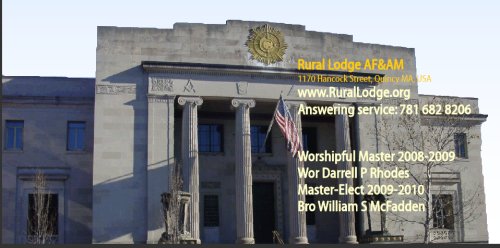
(Editor's Note - I borrow many of the stories from a number of sites with permission of the editor or authors and give proper credit when known. Although I try to pick out some of the better stories and articles for Masonic news, education and even a little fun, some viewers would like to read more. For that reason I am introducing some of the better Masonic education and news sites with this series. - Corky)
I found the Rural Lodge newsletter website about a year and a half ago and have downloaded every one of them back to May of 2008 and even now I go back every once in a while and reread one. This newsletter was a big inspiration for me to attempt to create the Small Town Texas Masons E-magazine. If you subscribe, you will receive an email each week when the new issue is posted. A funny thing about that was when I received the first two emails they contained the phrase “Wor Master” and I decided it couldn't be a real Mason and must be some evil hacker trying to spread a virus to Masons. So I didn't follow the link until the third email. Then I had to go back to the archives an download them. Although it is a blue Lodge newsletter it does not dedicate very much space to the Rural Lodge itself. Of course being a weekly newsletter, it would be hard to find news from a local Lodge every week. It is however, filled with stories, articles and news about Freemasonry in the state, USA and the world and a little bit of just plain fun. It is nothing for an issue to have 20 or 30 different stories, plus a number of announcements for local events and the 8th Masonic District Calendar. As a for instance, I checked the October 09, 2009 issue. It had a story about Masonry in Alabama, Colorado, The Philippines, Illinois, India, Massachusetts (7), Minnesota, New Jersey, New York (2), Ontario, Texas and 2 with area not mentioned.
All in all, The Rural Newsletter is a very high quality Masonic publication.
| ||
|
By: Lewis M. Parker, P.G.M., New Jersey
Phoenicia has just two claims to high achievement. In the first place the Phoenicians were among the first known sailors of the world. It is said they were the first to navigate upon the open sea and to chart their course by means of the stars. Thus to the men of Tyre goes the distinction of being the fathers of modern navigation. They must have been an alert and venturesome race. It is known that Phoenician sailors travelled all over the Mediterranean - sailed through the Straits of Gibraltar, down the coast of Africa, up the coast of Spain and even as far as England. If we wish to romanticize history a little we can see in our mind's eye a sea captain of Hiram of Tyre sailing through the Pillars of Hercules and gazing out upon a vast ocean - not knowing that 3,000 miles beyond his sight lay a land where 3,000 years later the name of his Royal Master would be perpetuated in Masonic Lodges
As the Phoenicians went about the Mediterranian they founded colonies in various places, the most famous of which was Carthage on the northern coast of Africa. Carthage flourished, and as the parent Tyre began to decline, Carthage carried on the Phoenician tradition. It came into conflict with the rising power of Rome, and after years of furious struggles, known as the Punic Wars, Rome was triumphant and Carthage was destroyed. But Carthage also prevailed -her general Hannibal, one of the great military commanders of all time, took an army across northern Africa, through Spain and southern France, over the Alps and down to the very gates of Rome before he was stopped. It is interesting to speculate that if Carthage had conquered Rome, our civilization, which so largely bears the imprint of Rome, might instead have been influenced by the people of Hiram of Tyre.
In the second place, the Phoenicians may claim to a high place in the history of mankind because, they were the inventors of the first known alphabets We take the alphabet so much for granted that it is hard for us to conceive of a time when it did not exist. Hiram's people were certainly possessed of intellectual curiosity and skill to formulate a way whereby the thoughts of men could be transmitted through other than oral mean&. The Phoenician alphabet influenced the Greek, and the Greek the Roman. In reading these lines you are bearing a certain mute testimony to the genius of the people over whom our second Grand Master ruled.
Solomon's name and fame are still remembered today while that of his neighbour to the North has largely been forgotten. Solomon was fortunate in having adequate chroniclers (himself included) which Hiram lacked. Solomon did not equal Hiram in wealth and worldly power, but he did surpass him in the greater and more enduring values of wisdom and of the spirit.
King Hiram of Tyre has been saved from complete oblivion in the dusty tombs of history and is remembered by Freemasons because he gave freely of his resources to aid and assist a neighbour in a great and important undertaking.
| ||
|
Page XIV | |
|
By CAROLYN WEBB
IN THE new Dan Brown novel The Lost Symbol, freemasons drink wine from human skulls. Apron-wearing politicians warn initiates at sword-point not to spill secrets or they'll have their tongues cut out.
The lead character, symbologist Robert Langdon, from Brown's earlier novel, The Da Vinci Code, scours Washington DC in search of a pyramid with a code word, inscribed by masons, that can help deify men.
There's a lot of bunkum in the book, according to Barry Reaper, the grand secretary of Freemasons Victoria, although real-life freemasons do have symbols, secret rituals and politician members, and they do wear aprons.
But overall, ''we think it portrays Freemasonry in a pretty fair and very respectful light'', Mr Reaper said.
The retired banker, a mason for 47 years, said the book could generate interest and spark young people to join. Since its September 15 release, the average number of hits on Freemasons Victoria's website has doubled.
There are 340 masonic lodges in Victoria and 14,000 members who practice brotherly love, truth and charity. Freemasons raised $1.1 million for the bushfire appeal and run homes for the aged.
But there are no blood rituals such as drinking wine from a skull. There are no ''chambers of reflection'' with skeleton, scythe and hourglass as reminders of mortality. No holy word and no pyramid.
It doesn't upset Mr. Reaper. ''There are some fantasy elements in the book which are there to make it exciting as a work of fiction,'' he says. ''On the whole, we thought it was good escapist fun.''
Compared to Washington's granite and marble House of the Temple described in The Lost Symbol with chandelier fire bowls and Teutonic crosses, Melbourne's masonic centre at Dallas Brooks Hall, built in 1969, resembles a no-frills church.
But it is symbol-rich. A metal ''all seeing eye'' reminds masons their actions are noticed by a deity or their conscience. The checkered black and white carpet symbolizes the contrast between good and evil.
At meetings, members wear dinner suits, and aprons that honor the Freemasons' origins as medieval stonemasons.
During initiations, inductees wear blindfolds to symbolize moving from darkness to light and swear to uphold Freemasonry's mysteries.
Then there are degree rituals - a kind of upgrade test - in which masons learn moral lessons through tool metaphors. A mason's square, for example, teaches one to look after your family, obey the law and support friends and community.
Current judges and state and Federal MPs are freemasons. Prime ministers Billy McMahon and Robert Menzies were masons, as was cricketer Don Bradman and war hero Edward ''Weary'' Dunlop.
Mr Reaper says men ''from all stations in life'' are masons, including plumbers, carpenters and farmers. They wear white gloves to symbolize equality, so a laborer's hands won't stand out against, say, a lawyer's.
''We believe in support of each other, no matter what our profession is,'' Mr Reaper says.I have noticed that often lodges are able to get quite a few new members initiated, but over the next few months or first year their participation wanes and they end up leaving the craft. I have discussed this topic with quite a few brethren in some detail and I'm going to weigh in on what I believe are some mistakes we might be making and offer my suggestions.
Brotherhood
As a freemason we afford each other a certain implicit trust and friendship knowing that we are all good men who are striving for the same purpose. Being a brother is more than just showing up to meetings or shaking a few hands it's about genuinely taking an interest in your brethren and opening up your life experiences and feelings to each other. True friends are always there for each other, they share their passions, desires, aspirations and pain knowing you will always be their to support them. Recite to yourself the 5 PoF and you will understand how important and ingrained this should be.
Participation in Lodge
One thing that really appealed to me at my mother lodge was how the worshipful master encouraged all brethren to participate in the ritual work. We would break up some of the longer lectures, or feed out some small bits such as the lesser lights to brethren that we not in the chairs. This really helped to encourage me personally to be active in lodge, in practice sessions and to feel like I have contributed; it became "my" lodge, not just a lodge that I had joined.
Outside of the Lodge
I have lived in small towns and big cities and one thing which I have noticed is the level of interaction with brethren outside of lodge is drastically different. Small town masonry, like small towns seems to be more of a tight knit group. It wouldn't be uncommon to pop in at a brothers business and chat, to meet for coffee, or share a beer or two (perhaps in a certain brothers' wood working shop). But these niceties are rare indeed for big city masonry. I believe that openness and welcoming nature of small town masonry is a wonderful thing and I hope that we can have more social functions, informal meetings and friendly greetings even in the big city environment.
Education and Development
We regularly profess to new applicants that we are a society of men who use allegorical and metaphorical stories to pass on great truths, that when studied and put in to action will help us on our eastward journey. But I ask you honestly, do you feel that you have learned our rituals, have you studied our texts; could you do more than merely repeat some ancient scripture verbatim? Many men join for the allure of learning about these lessons and truisms, but how can we teach them if we ourselves are only superficially aware of their meaning? I have heard from numerous brethren and demitted brethren that they thought and hoped they would learn from freemasonry which they haven't been taught elsewhere, but they were sadly mistaken when time and again their peers did not support, encourage and nurture their interests.
Visitation
Perhaps the most amazing aspect of freemasonry is visitation. Being welcomed to a lodge is a wonderful experience, but for the new freemason visiting a strange lodge and not knowing any brethren could be a very daunting idea. Often new brethren will visit lodges that reside in the same building as their mother lodge, but many will not drive to another city or town to visit a totally unfamiliar lodge without support. I suggest that if you are going to visit a lodge that you offer to take the new brother, pick him up from home, or meet him there. This will help to foster that friendship in your own lodge, as well as introduce him to process of visitation and how wonderful an experience it can be.
These are a few topics that I believe could use some improvement in our lodges and I submit them to you for your discussion, consideration and comment.
| |
|
Page XV | |||||||
|
By Blaine L. Pardoe
It is my hope that members of the Masonic Order will enjoy this true story about one of their members, Count (Graf) Felix Alexander von Luckner.
To understand the role of the Masonic order in the story of Count von Luckner and the Sea Eagle, you must go back to the beginning, to a simpler time, when honor and pride meant something more than it does today…
Blaine Pardoe
Over the next seven years he learned mastery of sailing ships. He returned home at the age of 21 and became an officer in the German navy. When the Great War broke out Von Luckner was something of a celebrity in the Kaiser's royal court. He was not like the other royals; he had lived a hard life and had earned his living with his hands and heart. He was a gunnery officer aboard a Dreadnought and fought in the massive battle of Jutland.
Germany had a need for such a man. They sent out merchant raiders, commerce ships with hidden guns, disguised as neutral ships, to penetrate the Royal Navy's blockade. One such ship was the former American windjammer, Pass of Balmaha. It was armed with two 4.2 inch guns and re-christened the Seeadler (Sea Eagle). The ship was outfitted with secret compartments, traps and was disguised as a Norwegian lumber ship right down to a Norwegian speaking German crew and even one man wearing a dress, posing as the Captain's wife. The Seeadler would have made James Bond green with envy.
There was only one officer with the rank and experience to command such a large sailing ship — Felix von Luckner. In a hurricane force gale in 1917, he sailed through the British blockade. His ship was apprehended but through guile, bluff, and sheer luck, he and is crew fooled the British boarding party and made a good getaway.
It was all very legal, but Von Luckner did it with, well, style. Rather than treat his prisoners as captives like other raiders did, he put them on his payroll. As a former merchant seaman he knew how to appeal to a sailor's heart. He offered them a bounty of a bottle of champagne and a bonus if they spotted a potential target. Soon the rigging of the Seeadler was as filled with, “prisoners,” as it was German sailors. He even formed a “Captains' Club,” with his fellow captains, dining together daily.
Throughout his time in the Atlantic he only took one life. A shot to disable an armed ship accidentally killed a young boy. Von Luckner held a tearful funeral for the young man – the only victim of the Seeadler throughout the course of the war.
After several months there were over 200 prisoners aboard the Seeadler. Von Luckner captured a ship and cut her masts to reduce its speed. He transferred his prisoners over to the ship and set them loose to freedom in Rio. When they arrived in port the Royal Navy discovered who had been sinking their ships. They set a trap for him at Cape Horn, but Von Luckner's luck held as he skirted the British patrols and made his way into the Pacific.
With supplies running low on the tropical island, Von Luckner took five men in an open launch in search of another ship to continue his mission. Through a perilous trip they sailed over 2,000 miles in the open ship and narrowly escaped capture on several occasions. Near Fiji, they were apprehended by a local constable. While they had enough firepower to capture the island, the crew and their captain were not wearing uniforms. To defend themselves would have marked them as spies, pirates, or worse…and he was unwilling to sacrifice his honor.
While a prisoner in New Zealand Von Luckner and a handful of other POWs escaped, stealing the POW camp commandant's launch. They captured another ship, but were soon apprehended by an auxiliary cruiser of the New Zealand Royal Navy. While Von Luckner was returned to prisoner status, his remaining crew on Mopelia captured a ship and made their way to Easter Island and eventually to Chile.
His daring exploits during the war did not alter Germany's fate. Von Luckner, though, remained a hero of the German people. His pluck and daring were respected and he often spoke to groups of young Germans to inspire them. Books of his adventures, oftentimes exaggerated, were sold around the world.
The German government engaged him as an ambassador of peace. He traveled to the US where he became an instant celebrity. His former captives spoke highly of him and crowds packed auditoriums to hear him tell his story. He was granted several honorary citizenships in the U.S. and abroad.
With the rise of Hitler in the late 1930's, Von Luckner found himself less wanted. He refused to join the Nazi party but tried to help Germany. His trip to Australia in 1938, sponsored by several party members, was something of a debacle for Germany. Von Luckner was not a shill for the Nazi Party and did not spout the propaganda that the Nazis hoped he would.
When he returned to Germany Hitler had him brought up before a Court of Honor on a string of trumped-up and falsified charges. He was implored to renounce his foreign citizenships and refused. Moreover, he was ordered to renounce his membership in the Masons and refused. The Nazis viewed the Masonic order as a direct threat – a loyalty that Germans might hold above the Nazis' own dark cause.
Von Luckner took a great deal of risk in defying Hitler. His popularity with an entire generation of Germans spared his life. He was placed under a form of house arrest in Halle, Germany, his family's hometown. His books, once required reading, were burned and he was no longer allowed to meet groups in public.
In 1945 the U.S. Army's 104th Division (The Timberwolves) approached Halle and the entrenched Germans there. Halle was the largest city in Germany that had been spared widespread strategic bombing attacks. The city held thousands of German civilians and thousands of American POWs who were being treated in her hospitals.
Von Luckner realized that Halle would be destroyed by the U.S. Army if they resisted. In the middle of fighting he snuck through the battle lines, meeting up with a pair of reporters who were seeking him out. The old Count, former privateer, and hero met with General Terry Allen and successfully negotiated a German withdrawal from Halle. His actions alone saved hundreds if not thousands of lives on both sides.
When the war was over the Count did not return to the speaking circuit. Bitterness with Germany after years of war and strife strained relations. The Russians entered Halle and declared that that the American Army had never been there – that they had liberated the city. General Patton himself helped get the von Luckner family out of the hands of the Russians and to the Countess's home in Sweden. |
|
Page XVI | ||
|
The Beehive By Fred Milliken
It was somewhere around two years ago that I read some material on the changing direction of men's and women's career paths. It seems more and more guys are stopping at a High School education and immediately entering the workforce, while more and more girls are continuing on to higher education and high priced careers. High School honor rolls show that two-thirds of honors students are females. According to the National Center for Education Statistics, in 1972, women were 42% of the college undergraduates, but by 2001 they were 56%. In 2001, women represented 60% of the Bachelor's Degree recipients. Moving on, what do Annika Sorenstam, Suzie Whaley, Jan Stephenson, Michelle Wie, and Se Ri Pak have in common? They have all crashed the men's PGA tour. And this year who has not heard of racing car sensation Danika Patrick? Her achievements have boosted racing attendance and viewing by 25%. All this is enough for me to conclude that the 21st Century is the Century of the ascension or re-ascension of women, except in age old traditions. It is ironic that those institutions and organizations that have been around the longest and show centuries of tradition are those that exclude or limit full participation by women. The two most notable are the Christian Church and Freemasonry. In the case of the early First Century Church there were leadership positions occupied by women. As time went by the Church became dominated by male leadership but it didn't start out that way. Is that true in Freemasonry? Well let's take a look. In the "York Manuscript No. 4," written in 1693 and belonging to the Grand Lodge of York (England) we find that it gives "he and she instructions." In 1696 two widows are named as members in the Operative Masons court. In 1714 Mary Bannister was apprenticed as a Mason for seven years. In the early 1700's, as best as I can tell around 1712, Elizabeth St. Leger, later Elizabeth Aldworth, was initiated into Lodge No. 95, Cork, Grand Lodge of Ireland and later became its Master. Upon her death she was given a Masonic funeral. It is worth noting that this occurred before the Grand Lodge of England was formed and exclusion of women became an "ancient landmark" with Anderson's Constitutions in 1723. You have to jump all the way to 1893 for the next big development for Women in Freemasonry. Actually that's not as bad as it looks considering that the 19th Amendment to the American Constitution was not ratified until 1920. In 1893 Le Grand Loge Symbolique Eccossaise, Le Droit Humain, French Co-Masonry, was formed in Paris. In 1903 the first Co-Masonry Lodge was formed in the USA. Next was the development of women-only Lodges, often offshoots of Co-Masonry. First was the Honourable Fraternity of Antient Masonry founded in England in 1908. This group was followed by the Honourable Fraternity of Ancient Freemasons in 1913. Today it is estimated that 60,000 female Masons belong to these two English Grand Lodges. In 1945 in France the Union Maconnique Feminine de France was formed as an all women's Grand Lodge. There is more that can be reported worldwide, but needless to say there are women in Freemasonry all over the world. Those who say there never was a women Freemason are wrong. Those who say, "there is no tradition of women in Freemasonry," are also wrong. It has been more than one hundred years with women Freemasons performing essentially the same work we men do. I anticipate the next rebuttal. But, but……, you say, all this is not recognized. It is irregular, clandestine. Commenting on the two Female Grand Lodges in England in March 1999 the Grand Lodge of England stated that: "Freemasonry is not confined to men" and except for the fact the Lodge membership was female, they were otherwise "regular". There is a new age dawning. It is the age of the ascension of women, everywhere in every walk of life, co-equals and second to none. While most of us in North America are under obligations not to be at the making of a Mason of a woman, that does not exclude dialogue. I see three steps we in North America should take right away: 1) Talk to women Masons. This business about there being a prohibition of no Communication says nothing about discourse but rather forbids sitting together with a woman Freemason in a tiled Lodge meeting or Communication. 2) Socialize and share projects with women Freemasons. Again while we cannot sit in Lodge with them we can unite in a dinner or a community or charitable affair. 3) Rent space to them. Lodge buildings are under funded and in need of more tenants to help pay the bills. This is a much better idea than fund raisers for those who won't raise dues. I respect those male Freemasons who want a men's only Lodge. No one should have fraternal intermingling of the sexes rammed down their throat. On the other hand I respect those women who claim the right to experience all the joys of fraternal communion that men do. Why should they be denied? So let us open up lines of communication, dialogue, and sharing, and see where that takes us, operating within the legality of our Grand Lodges. And let us always respect the freedom of choice, the choice that Burger King advertises when it says "Have it your way."
As a Roman Catholic Mason I have a good sized wager with a close Masonic friend on who will first treat women as co-equals, the Church or the Fraternity. If you want to know where my money was placed, well you will just have to E-Mail me. I have enjoyed this opportunity to put a bee in your bonnet. |
|
Page XVII | ||||||
|
By Anneli Rufus
This is hardly the first time in history that people have suddenly started spouting prophecies and speaking with the dead. These fads come in waves, usually fostered in the wake of unbearable tragedy. What else to do about earthquakes, floods, epidemics, dictators and wars than wonder which demon or deity devised this living hell and why, and what sacrifice or sorcery might make it stop? It is always fear and despair that sets us on this train of thought. During a gold rush or when we've just been given a clean bill of health, we need not believe in magic. In the Black Death-ridden Middle Ages, chilled and starved by a climate shift now known as the Little Ice Age, Europe became obsessed with the body parts of saints. Crystal-encased, gem-bedecked bones and hanks of hair and half-mummified fingers, heads and hearts were credited with curative powers. Pilgrims packed cathedrals housing so-called holy relics, sometimes trampling the sick and weak during stampedes. Centuries later, the occult became the next big thing again as World War I and the 1918 flu epidemic found seances filling entire auditoriums around the world. Yet another paranormal paroxysm crested in the early 1970s: Think Watergate, Vietnam and the post-'60s awareness—a tragedy for some—that nothing would ever be the same again. And now: Twin Towers. Financial collapse. War. Flood. The H1N1 virus is our plague. Or is it? "In recognition of the continuing progression of the pandemic, and in further preparation as a nation," as he put it, Barack Obama declared a national state of emergency on October 23. This declaration allows the federal government to waive certain requirements regarding prevention and treatment procedures because "the potential exists for the pandemic to overburden health care resources in some localities," Obama said. But the folks at AntichristIdentity.com would probably say this is just his latest step in "progressing the Antichrist system that is gathering pace after the recent world economic upheaval"—a system that "implicates not only Barack Obama but also Javier Solana of the European Union, Prince Charles of Wales, Queen Beatrix of Netherlands and Prince Hassan of Jordan," a "power bloc" that "will drive the Antichrist world government." The folks at BeastObama.com call it "amazing stuff going on here, right before our eyes ... and it fits the pattern set out in Revelation 13."
It's all about control, as that's what wizards, angels, demons, gods and elected officials wield. Is it such a long leap from superpower to supernatural? Rumors of a secret cabal plotting to create a New World Order have been swirling almost ever since the Old World Order began. The nature of these shady puppeteers depends on who's doing the worrying. Jews have been evergreen suspects, whether it's the Elders of Zion or my penniless ancestors slogging through the Polish mud. Secret societies such as the Knights Templar and Freemasons stoke automatic fear: What are they doing in there? As initiated members of a nondenominational, multiracial, all-male society whose origins are veiled in mystery but was probably founded in the late 16th century, Freemasons base their symbology on the tools of traditional stonemasons and allude, in their top-secret, tell-no-tales rituals, to the building of the Temple of Solomon. They wear lambskin aprons and do things with compasses, and they've been blamed for darn near everything. The Vatican officially condemned the brotherhood in 1738 for being "as political as they were religious," writes Jay Kinney in The Masonic Myth: Unlocking the Truth About the Symbols, the Secret Rites, and the History of Freemasonry (HarperOne, 2009). And even though George Washington, Paul Revere and Benjamin Franklin were all Masons (lending support to rumors that the Boston Tea Party was a Masonic plot), America's first third party was the Anti-Masonic Party. It was founded in 1826 and four years later, Kinney tells us, 124 different anti-Masonic newspapers were thriving.
Article 22 of the Hamas Covenant repeats the Jewish/Mason claim, and then some: "With their money, they formed secret societies, such as Freemasons, Rotary Clubs, the Lions and others in different parts of the world for the purpose of sabotaging societies." Other conspiracy theorists charge the Masons with faking the moon landing, worshiping Satan and assassinating JFK. "Within the thriving subculture of present-day born-again Christianity," writes Kinney, a longtime Gnosis magazine editor and 32nd-degree Knight Commander Court of Honor in Freemasonry's Scottish Rite, "anti-Masonic books are a mainstay," thanks to evangelists such as Pat Robertson, who has called the brotherhood "a mystery religion designed to replace the old Christian world order of Europe and America." Kinney mocks those "legions of anti-Masons, most of them superstitious believers in the occult as a demon-infested quagmire," who "shiver dramatically as they hawk their books and videos." He also notes that British conspiracy theorist David Icke, the most famous proponent of the reptilian concept, posts material at his Web site alleging that "there are secret tunnels beneath every Masonic lodge to facilitate reptilian rendezvous." Yet Kinney insists that Freemasonry's origins were neither alien nor occult: "Rather, it seems to have been an attempt to create a nucleus of men of goodwill, over and above fractious religious conflicts, using the motifs and symbols of temple building as working tools both for the deepening of the individual soul and for building an archetypal temple to the Most High in the collective imagination of humanity."
Okay, but what are they doing in there? And are they or are they not intertwined with the Illuminati, a soooopersecret club founded in Germany in 1776 and modeled on the Masons but which Kinney claims disbanded in the 1780s but which conspiracy theorists insist still thrives, boasting such members as Barack Obama and both Bushes. "All this chaos, genocide, ethnic cleansing and the overall disasters have a genuine purpose," we read at Illuminati-News.com: |
|
Page XVIII |
|
Reprinted With Permission Of The Author Bro. Terence Satchell We have heard over and over that Freemasonry is a Brotherhood. That it is a fraternity. We use the term ‘Masonic Family’ when referring to the group of organizations associated with Masonry. But it often seems that we use these terms out of habit, without any sense of meaning behind the words that are coming out of our mouths. I can think of countless lodge meetings that I have attended where we recognize men as Brother Smith or Worshipful Brother Jones. We use the term ‘Brother’ so often that we become desensitized to its meaning. Soon the word ‘Brother’ becomes little more than a substitute for ‘Mister’ or ‘Sir.’ Perhaps this is a failing of our institution’s protocol or perhaps it is our own fault for overusing this word. But in the spirit of the Christmas season, I’d like to talk a little bit about what the word ‘Brother’ means to me. A Brother is your next of kin. He is more than a friend, he is your own flesh and blood. A man for which you would lay down your life. In the Masonic lodge, the term refers to the men of that mystic tie, that solemn obligation which we have all taken. This obligation is more than just a formality or organizational oath. The obligation is a pledge to be true to God, to yourself, and to your neighbor. The obligation is our promise to live and act virtuously and to love our fellow man. When we assume this obligation, we are declaring that we wish to be in the company of men who share the same values and ideals. By uniting ourselves with this honorable pledge, we become Brothers of that ancient and honorable clan: the Freemasons. Unfortunately, we find that throughout history that relationships between brothers have not always been worthy of emulation. Two of the greatest examples of this are found in the Old Testament. We read of Cain murdering Abel in Genesis and when God inquires about Abel’s whereabouts, Cain replies “Am I my Brother’s keeper?” We learn that Jacob was willing to trick his father Isaac in order to obtain Esau’s blessing. We need not look far to see similar actions occurring today. Our Masonic lodges are full of Brothers who resent each other out of jealousy or are too proud to meet each another upon the level. We have arguments and feuds over lodge business and we often neglect our fellow Masons in need of relief. During the Christmas holiday, Christians celebrate the birth of Jesus who would grow up to become a leader that espoused the ideals of Brotherhood. Of all the lessons that Jesus taught, the most important is undoubtedly his new commandment: love one another. This is exactly what we as Freemasons and as Brothers should do. For if we love one another we will act by the square, we will circumscribe our desires, and we will give relief to our worthy Brother Masons. If we use the word ‘Brother’ not out of habit, but out of love, we will truly be a Masonic family. And by loving one another, we can understand the spirit of that solemn obligation. One of the tenets of our profession is Brotherly Love and I propose that we all make this theme our focus for the new year. Let us make love a bigger part of the Masonic equation and let us focus on the meaning of being a Brotherhood.
My Brothers, love one another.
|
|
The Real "Secrets" Of Freemasonry Author Unknown
Finally, yes Freemasonry does have some real "secrets". They are usually called the "modes of recognition", and they are the ways that one Mason can prove himself to another. They are secret in that I and every other Mason have promised very seriously and sincerely never to give them to anyone who isn't a Mason. As Master of a lodge, I teach these modes of recognition to our candidates, and as an instructor in a Lodge of Instruction, I meet with candidates from various lodges, and make sure that they have learned them and remember them correctly. But I will not tell them to you or anyone else not entitled to them. Period. I promised I wouldn't. I gave my word. Of course, there have been many cases through history of Masons who did not take their promises seriously, and who have revealed those secret modes of recognition. There are many many books printed which contain them. I'm not going to help you find them. If you did find one, though, and you read through it eagerly, skipping all that stuff about moral lessons and history, looking for the "big secrets", you'd find them, and you'd say "What a stupid and inconsequential bunch of bull! Those are the big secrets? Who cares?" And in a sense, you'd be absolutely right. They are only important because, 1. they let Masons prove themselves to each other
Without that context, they are meaningless.
|
|
Page XIX | |||||||
|
From the Lodge Anima Glasgow 1223 Web Site
During the mid 1950s the Lodge changed to evening meetings after much discussion and argument. They changed to evenings mainly because attendances were falling due to many members leaving the cinematic trade.
In June 1962 Lodge Paisley St. Mirren 129 presented a new Jewel for the Masters Chain this is inscribed as such and is the present Jewel worn by the Master.Other items worn on the Masters Chain is a founder members Jewel of Lodge Anima 421 of New South Wales, Australia dated 1931.
The year of 1970 was the Lodges Golden Jubilee and a Jubilee medal was struck and a meeting was held on Thursday 3rd of September 1970. This was 50 years to the day when the Lodge was consecrated and after the meeting a Jubilee Dinner was held in the Trades House Glassford Street. Glasgow the Masters of both our sponsor Lodges were present and also Brother Adam Ferguson Depute Provincial Grand Master (Brother George Fenwick died two months before)
On Tuesday 25th April 1972 brother Adam Ferguson P.G.M. presented Brother Emmanual Levitus D.S.M. P.M. with a Diploma of Honorary Grand Rank of Architect and a Jubilee certificate. Brother E Levitus joined the Lodge in 1922 this was the first ever Jubilee certificate given to a Brother of Lodge Anima Glasgow 1223 and to date there have only been two given to the Lodge the other belonging to the late Brother Dr. Ernest Levine P.M. Lodge Montefiore 753
During the 89 years of the Lodges existence it met mainly at 100 West Regent St.Glasgow. Among the other places we have met, were Bath Street, Saltire House Ashley Street. Clydesdale Masonic Halls on Butterbiggins Road, Bell Street Candleriggs and finally 101 Clifford Street Ibrox where we still meet today.
|
|
Page XX | |
He is there. Now see if you can find him. Hint - look for shoes.
Once upon a time, a guy asked a girl 'Will you marry me?'
The girl said, 'NO!'
And the guy lived happily ever after and rode motorcycles and went fishing and hunting and played golf a lot and drank beer and scotch and watched every ball game on TV all weekend and left the toilet seat up.
THE END
FRIENDS
He remembered dying, and that the dog walking beside him had been dead for years. He wondered where the road was leading them.
After a while, they came to a high, white stone wall along one side of the road. It looked like fine marble... At the top of a long hill, it was broken by a tall arch that glowed in the sunlight.
When he was standing before it he saw a magnificent gate in the arch that looked like mother-of-pearl, and the street that led to the gate looked like pure gold. He and the dog walked toward the gate, and as he got closer, he saw a man at a desk to one side.
When he was close enough, he called out, 'Excuse me, where are we?'
'This is Heaven, sir,' the man answered.. 'Wow! Would you happen to have some water?' the man asked.
Of course, sir. Come right in, and I'll have some ice water brought right up.. 'The man gestured, and the gate began to open.
'Can my friend,' gesturing toward his dog, 'come in, too?' the traveler asked.
'I'm sorry, sir, but we don't accept pets.
The man thought a moment and then turned back toward the road and continued the way he had been going with his dog.
After another long walk, and at the top of another long hill, he came to a dirt road leading through a farm gate that looked as if it had never been closed. There was no fence.
As he approached the gate, he saw a man inside, leaning against a tree and reading a book.
'Excuse me!' he called to the man. 'Do you have any water?'
'Yeah, sure, there's a pump over there, come on in.'
'How about my friend here?' the traveler gestured to the dog.
'There should be a bowl by the pump...'
They went through the gate, and sure enough, there was an old-fashioned hand pump with a bowl beside it.
The traveler filled the water bowl and took a long drink himself, then he gave some to the dog.
When they were full, he and the dog walked back toward the man who was standing by the tree.
'What do you call this place?' the traveler asked.
'This is Heaven,' he answered.
'Well, that's confusing,' the traveler said. 'The man down the road said that was Heaven, too.'
'Oh, you mean the place with the gold street and pearly gates? Nope. That's hell.'
'Doesn't it make you mad for them to use your name like that?
'No, we're just happy that they screen out the folks who would leave their best friends behind.'
|
|
|

